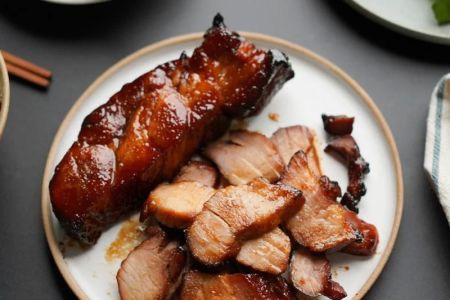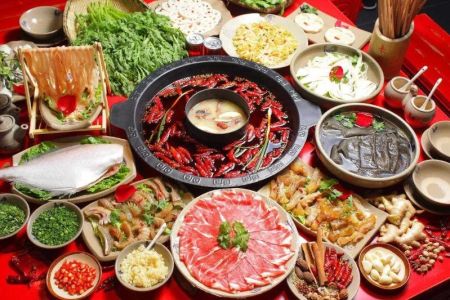How to Open a Small Chinese Restaurant: A Complete Guide
Opening a small Chinese restaurant is an exciting and rewarding venture, but it requires a lot of preparation, planning, and hard work. Having been passionate about food and the restaurant business for years, I decided to take the leap and start my own Chinese restaurant. Throughout the journey, I learned valuable lessons that I wish I had known before diving into the process. In this guide, I will walk you through the essential steps to open a small Chinese restaurant, sharing practical tips and advice based on my personal experience. Whether you’re a first-time entrepreneur or have experience in the restaurant industry, these insights will help you get started on the right foot.
1. Understand the Restaurant Business
Before jumping into the world of restaurant ownership, it’s important to fully understand the business itself. I spent a lot of time researching the restaurant industry and learning about what makes a successful restaurant. Chinese cuisine has been a staple in many countries, particularly in the United States, but opening a restaurant requires much more than just cooking great food. You’ll need to think about your target market, your restaurant's concept, and the customer experience you want to create. Also, understanding the finances, including food costs, labor costs, and profit margins, is crucial for long-term success.
One key takeaway from my research was the importance of location. When choosing a location for my restaurant, I considered foot traffic, visibility, and proximity to residential and commercial areas. A location in a busy downtown area or a neighborhood with a large Asian population could give me a competitive advantage. It’s also important to understand the local culture and whether there’s a demand for Chinese food.
2. Developing Your Business Plan
Creating a solid business plan is the foundation of your restaurant’s success. It’s essential to outline your goals, vision, and strategies for success. I created a detailed business plan that included everything from startup costs to marketing strategies. Some of the key components of the plan included:
- Market Research: Who are your competitors? What are their strengths and weaknesses? Understanding your competition helps you identify gaps in the market.
- Menu Design: What types of dishes will you offer? Will it be traditional Chinese food, or will you add a modern twist? Your menu is a critical part of your identity, so make sure it reflects your vision.
- Startup Costs: Estimate the initial investment required for setting up the restaurant. This includes everything from kitchen equipment to the cost of interior design.
- Operational Plan: This includes staffing needs, hours of operation, and supply chain management.
Creating a well-thought-out business plan not only helps you clarify your goals but also attracts potential investors and lenders if you need funding.
3. Legal Requirements and Licensing
Opening a restaurant comes with a fair amount of paperwork. During my journey, I had to navigate through various legal requirements, including obtaining the necessary licenses and permits. Depending on your location, you’ll need to apply for a business license, food establishment permit, liquor license (if applicable), and health department inspection. Additionally, you must follow all local zoning laws and regulations to ensure that your restaurant complies with city codes. Working with a lawyer and an accountant is highly recommended to ensure that you’re following all the legal protocols correctly.
4. Choosing Your Restaurant's Concept and Design
The concept and design of your restaurant play a significant role in attracting customers. For my Chinese restaurant, I wanted to create an inviting atmosphere that reflects the culture and traditions of China while making it modern and appealing to a wide audience. I chose a minimalist design with clean lines and decorative elements such as lanterns and Chinese calligraphy. The ambiance of the restaurant is just as important as the food because it sets the tone for the customer experience.
When designing your restaurant, think about:
- Seating Capacity: How many people can comfortably fit in your restaurant? Consider the balance between maximizing space and offering a pleasant dining experience.
- Lighting: The right lighting can change the entire atmosphere of your restaurant. I opted for warm, soft lighting to create a cozy and welcoming environment.
- Kitchen Layout: A well-organized kitchen ensures that your chefs can work efficiently. Make sure there’s enough space for prepping, cooking, and plating the dishes.
5. Hiring and Training Staff
Your staff is a vital part of your restaurant’s success. From chefs to servers, each team member plays an important role in delivering an exceptional dining experience. When I started hiring staff, I prioritized finding people who were passionate about Chinese cuisine and customer service. I also wanted to ensure that my kitchen staff had experience working with Chinese dishes and ingredients.
Training is also crucial. In addition to teaching staff about the menu, I focused on customer service and restaurant etiquette. Every staff member should understand the importance of making each guest feel special, as customer satisfaction is key to repeat business. Make sure you have a clear training program in place to set everyone up for success.
6. Marketing Your Chinese Restaurant
Once everything is set up, it’s time to start promoting your restaurant. I found that a combination of traditional marketing, such as flyers and newspaper ads, alongside digital marketing, worked wonders. Social media platforms like Instagram and Facebook are powerful tools for attracting customers, especially when you showcase your delicious dishes with high-quality photos.
Another great marketing tactic is offering promotions or special events. For example, I organized a “Grand Opening” event with free samples of signature dishes, discounts for first-time customers, and live Chinese music to create a festive atmosphere. Hosting cultural events and offering deals for special holidays can also attract more customers to your restaurant.
7. Managing Finances and Costs
Running a restaurant requires careful financial management. During the first year of operation, I kept a close eye on expenses and adjusted my strategies as needed. One of the key challenges is managing food costs. I recommend tracking inventory closely to minimize waste and ensure you’re ordering the right amount of ingredients. You should also monitor labor costs and ensure that your staffing levels are in line with customer demand.
Lastly, don’t forget about taxes. Keeping accurate records of all financial transactions is essential for tax filing purposes. Using accounting software or working with an accountant can help you stay on top of your finances.
Conclusion
Opening a small Chinese restaurant can be a thrilling and profitable endeavor if you approach it with careful planning and dedication. From understanding the restaurant business to managing day-to-day operations, each step in the process will bring you closer to achieving your goal. By following these steps, you’ll be well on your way to creating a successful restaurant that serves delicious food and offers an unforgettable dining experience.






![Top Chinese Restaurants for Authentic Cantonese Cuisine in [Your City]](https://img.gochinarose.com/d33/2507/4157910400_450x300.webp)
